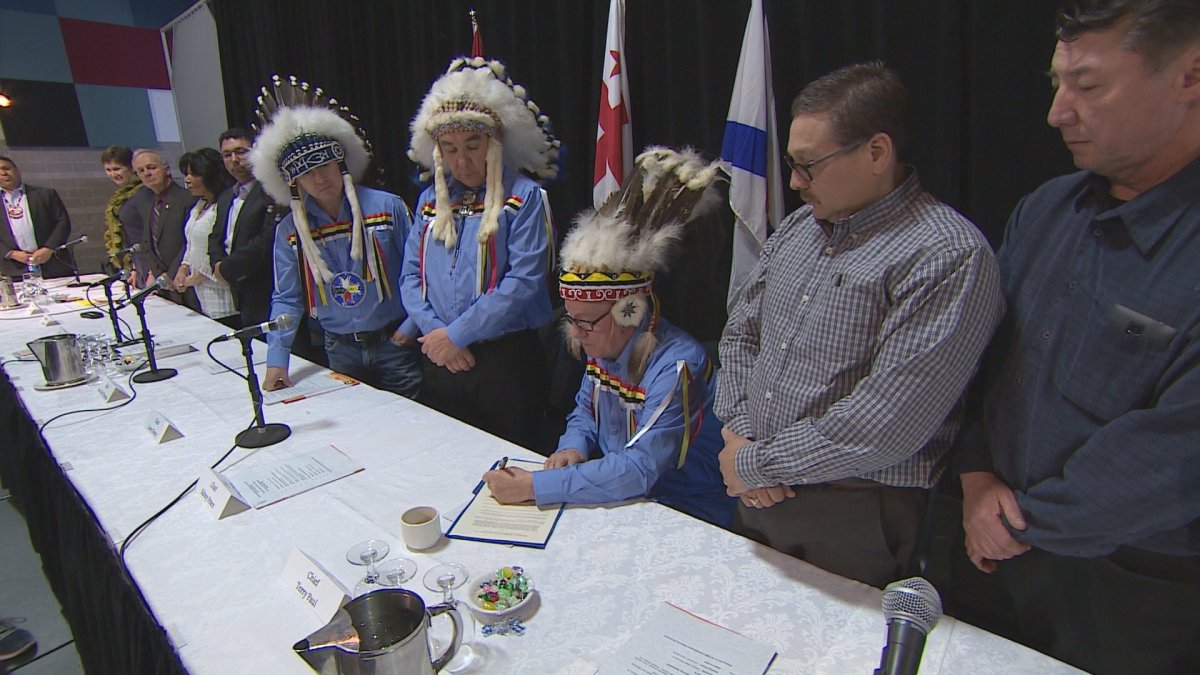New data being compiled in Nova Scotia shows the rates for some chronic illnesses and disease are much higher in Mi’kmaq people than in the general population of the province.

The information is part of a new provincial health registry, know as the First Nations Client Linkage Registry, the first of its kind in Canada. It’s a joint project of First Nations chiefs, the province and Health Canada.
READ MORE: How can Canada make an inquiry on missing, murdered women successful?
“For many years, our communities lacked critical information about the health of our people,” said Chief Andrea Paul of the Pictou Landing First Nation.
“We could not say with certainty how many of our people suffered from heart disease or cancer, or how many women were regularly screened for breast cancer.”
The data shows, for example, that overall cancer rates among First Nations communities are close to the general rate of cancer in the province; however, the rate of lung cancers are much higher.
Breast cancer rates are also similar, but more Mi’kmaq women are dying.
“One reason for this could be because we aren’t finding the disease early enough when it is most likely to be curable,” said Chief Paul.
- Shoppers faces proposed class action over claims company is ‘abusive’ to pharmacists
- ‘Bacterial vampirism’: Deadly pathogens attracted to human blood, study finds
- Most Canadian youth visit dentists, but lack of insurance a barrier
- Bird flu risk to humans an ‘enormous concern,’ WHO says. Here’s what to know
“Only 36.5 of the women in our communities who should be going for breast screening actually do, and this number has been going down in recent years.”
The much higher rate of diabetes among Mi’kmaq people is startling.
- Overall, the diabetes rate in First Nations communities is two times higher than in the general population in Nova Scotia
- For those between the ages of 59 and 69, the rate is three times higher, while it’s four times higher for those between 40 and 49 years old
- The real concern is for the youngest age group, between 29 and 39, where the prevalence of diabetes is five times higher in Mi’kmaq compared to the rest of the province.
“So now we know, for example, that First Nations people could benefit greatly from regular breast screening and from the services we already make available at diabetes centres across the province,” said Health Minister Leo Glavine.
“That’s a powerful example of why this client linkage registry is such an important tool for First Nations communities, governments and the health care system.”
Chief Andrea Paul said she wants to see the data put to good use.
“We do not want this health information to collect dust on a shelf,” Paul said. “We want to make sure the information will be used to bring about change.”
“We hope the information will lead to stronger collaboration, more holistic health services, and better chronic disease prevention and management.”
Two bulletins have been produced from the data collected focusing on cancer, and on diabetes and kidney disease.
Those will be distributed to those playing a role in improving health, including community members, health care providers and governments.





Comments